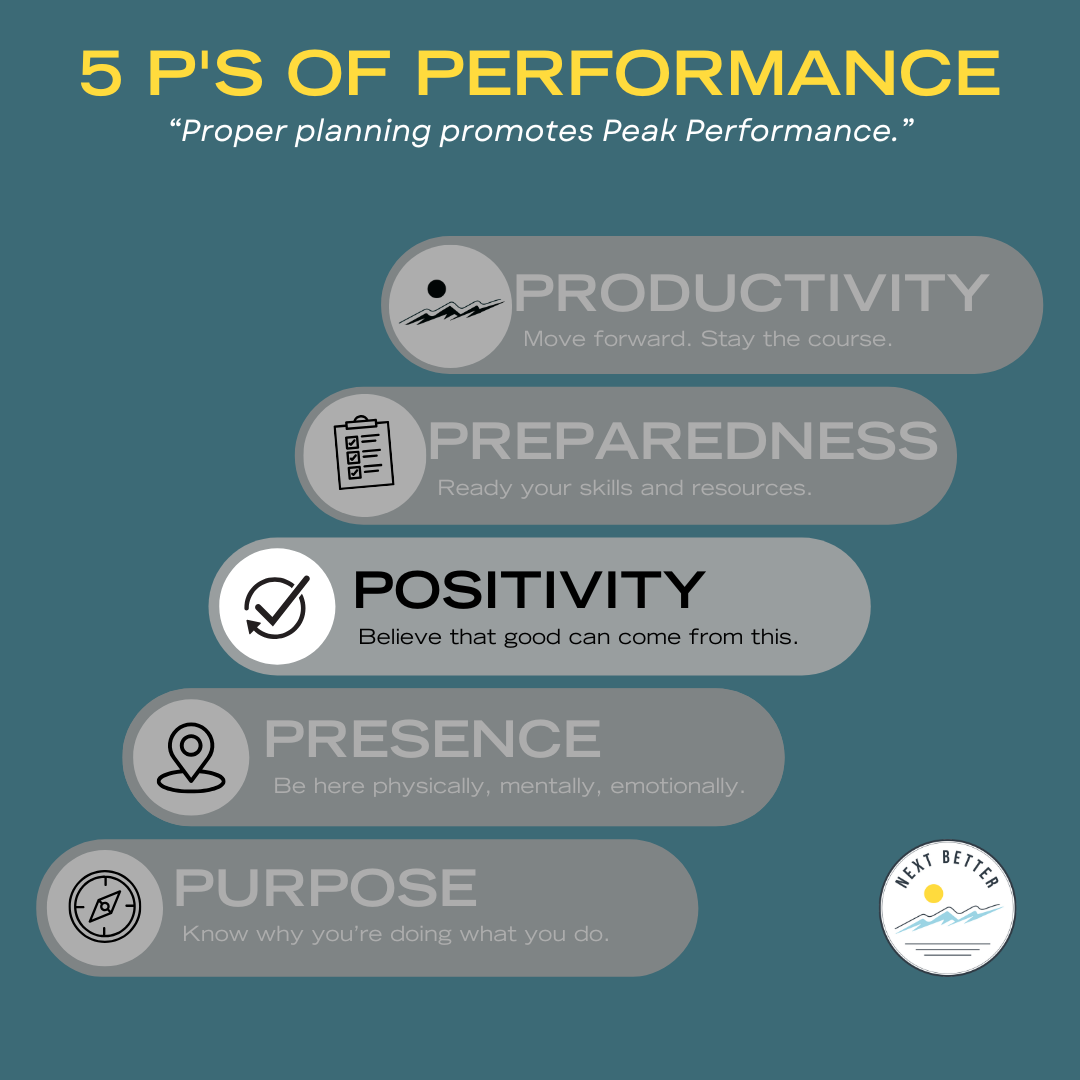Positivity: You Have to Believe It Can Be Better FIRST
This is Part 3 of a 6-Part Series: The 5 P’s of Peak Performance.
If you haven’t already, check out Part 1: Purpose and Part 2: Presence.
“I just don’t think she cares.”
That’s what my client said when we were talking about a team member who wasn’t putting in the effort. She was nearing retirement, clearly coasting, and didn’t seem interested in the new initiatives or direction the team was taking.
As a new leader, my client genuinely wanted her to feel included. He didn’t want to force change. He wanted buy-in. But no matter what he tried—new processes, one-on-ones, gentle nudges—he was met with the same distant attitude.
That’s when I shared one of my core leadership principles:
“Don’t meet them halfway. Go all the way to where they are—and bring them back to the middle.”
He was skeptical. Very skeptical.
“Lucas, you haven’t met her,” he said.
I didn’t have to. Because I wasn’t betting on her—I was betting on him.
I told him the key wasn’t just in the actions he took. It was in the mindset he brought to the moment. If he didn’t truly believe there was a good outcome possible—even if small—then his efforts would come off as fake. And she’d feel it.
He decided to go all the way.
He sat down, listened to her story, empathized with her frustrations, validated the challenges of change so late in her career—and showed her what was possible on the other side of it.
Today? She’s more engaged than she’s been in years. She may still be on her way out, but she’s walking out with the team, not away from it.
Positivity Is a Prerequisite for Progress
Positivity isn’t about fake smiles and forced optimism.
It’s about believing something good can come from what you’re facing—even if the odds feel stacked.
We’re always going to face obstacles. That’s where growth happens.
But you only grow if you believe growth is possible.
Otherwise, discomfort becomes defeat. Challenges feel final. And opportunity never shows up—because you stopped looking for it.
Why Positivity Fuels Performance
There are plenty of “bad” 4-letter words in the English language. But the worst?
“Can’t.”
“I can’t because...” is the fastest way to shut down creativity, possibility, and growth.
It ends the conversation before it begins. It traps high performers in inaction—not because they lack ability, but because they’ve stopped believing in potential.
But there’s a subtle shift that changes everything:
“I could… if.”
That phrase reopens the door to action.
“I could connect with her—if I changed how I approached the conversation.”
“We could make this meeting productive—if we started with a clear goal.”
“This relationship could improve—if I showed up differently.”
That’s the power of Positivity. It’s not about pretending everything is great. It’s about choosing to believe something good could still come from this—even if it’s hard.
Viktor Frankl, psychiatrist and Holocaust survivor, taught that meaning is found not in avoiding suffering, but in choosing how we respond to it. We may not control what happens to us, but we do control what we make of it. And in that choice lies our growth, our power, and our potential.
Positivity allows us to make that choice with courage. It’s what keeps high performers growing when others get stuck.
How to Practice Positivity (At Every Level)
Here are three practical ways to start building a more positive, performance-driven mindset:
1. Gratitude Practice (Easy Mode)
Start your day by listing 3 things you're grateful for.
Big or small. Personal or professional.
Gratitude reroutes your brain toward abundance, not scarcity.
There’s a reason this is the first practice for each day in the Next Better Journal. Because it works.
2. “Worst Case vs. Likely Case” Reflection (Normal Mode)
When facing something stressful, ask:
What’s the worst-case scenario?
What’s the most likely scenario?
You’ll usually realize the likely case is much more manageable—and completely within your control.
3. “10 Positive Things About the Problem” (Hard Mode)
Yes—10.
When you're facing a tough challenge, force yourself to write out ten potential benefits, lessons, or outcomes that could result.
This trains your brain to reframe—not avoid—difficulty.
The Weekly Positivity Practice
Here’s one exercise I give clients who want to build resilient optimism—especially in seasons of high stress or transition:
Step 1: At the end of the week, list all the things coming up next week that might be tough.
Meetings. Deadlines. Difficult conversations. Internal doubts.
Step 2: For each challenge, apply one of the practices above:
Gratitude
Worst vs. Likely
10 Positives
This proactive mindset shift helps you face the week with intention, not anxiety.
(Spoiler alert: this mindset work sets the stage for the next P—Preparedness.)
Choose Your Path to Positivity
If you’ve been struggling for years to develop a mindset of positivity—and it's limiting your leadership, relationships, or performance—then 1:1 coaching is your best next step. Together, we’ll dig into the beliefs, habits, and blind spots that keep you stuck, and create a custom path forward.
👉 Apply here for one-on-one coaching
If you already consider yourself a generally positive person, but want a practical way to stay accountable through tough seasons and setbacks, the Next Better Journal is built for you. It's simple, powerful, and built to be your weekly mindset reset.
👉 Order the Next Better Journal on Amazon here
One Final Reminder:
You can’t lead yourself—or others—into a better future if you don’t believe it’s possible.
Start there.
Start now.


